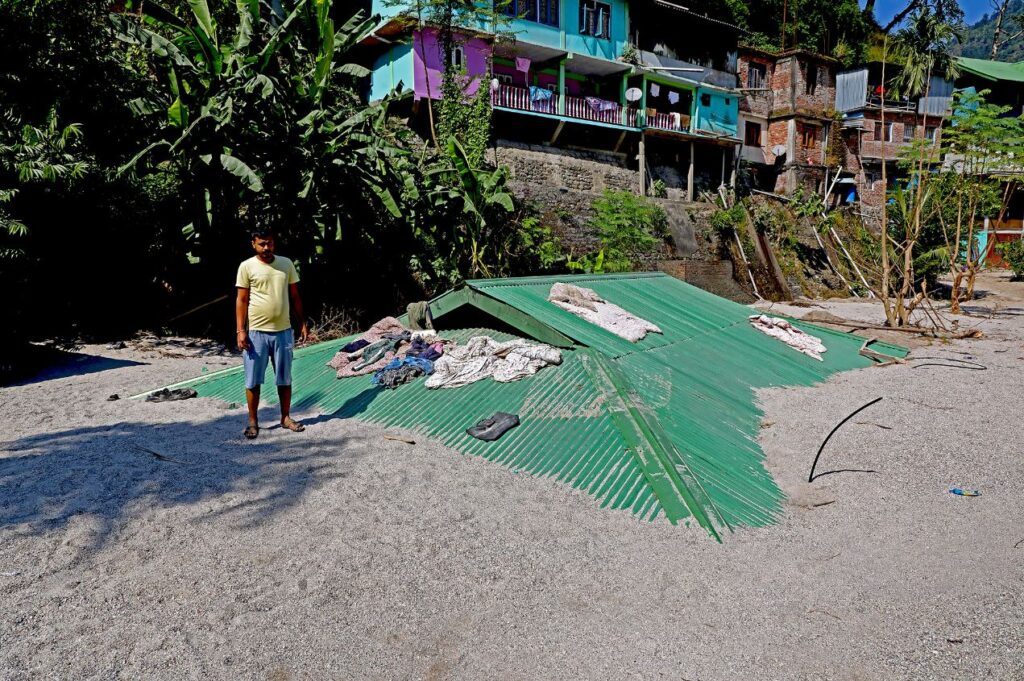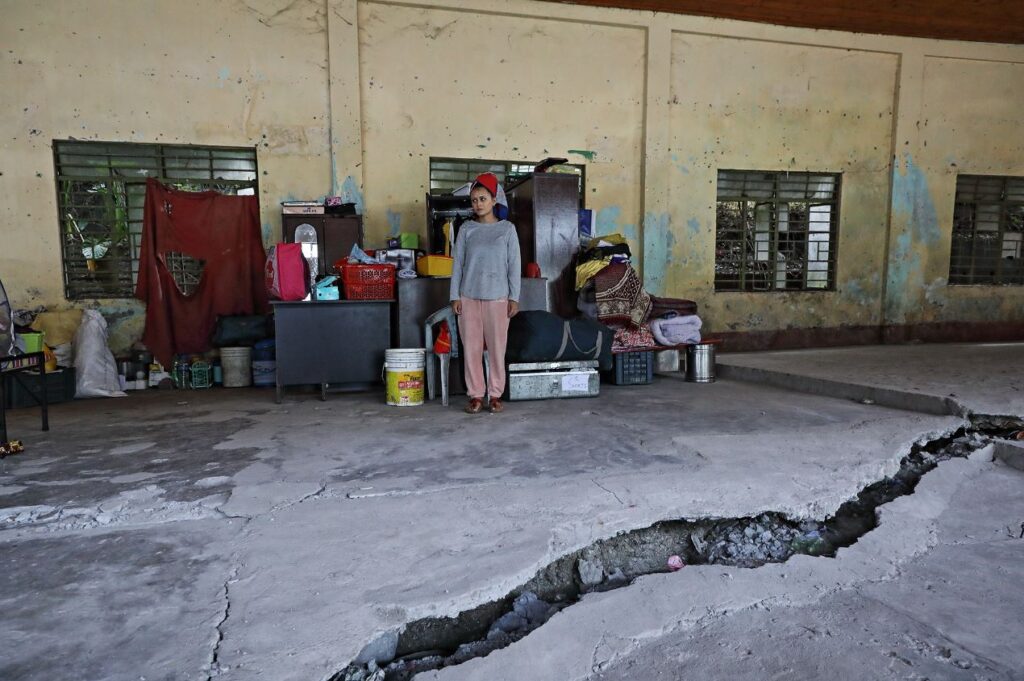Overview:
The wonderful Save the Hills blog has documented the long terms effects on downstream communities of the 4 October 2023 GLOF in Sikkim, India.
The Landslide Blog is written by Dave Petley, who is widely recognized as a world leader in the study and management of landslides.

The ever-reliable Save the Hills blog has a fascinating post about the impact of the 4 October 2023 Glacial Lake Outburst Flood (GLOF) in Sikkim, India. The lead author on the blog, Retired Wing Commander Praful Rao, travelled down the Teesta river, which was the path of the GLOF, documenting the damage. He has posted an invaluable photographic record to the Save the Hills blog.
There is huge richness in his report, but I will highlight two elements. First, the level of damage is very high. This image, for example, shows river sediment left by the flood:-

As Praful’s caption says:-
Chand Adhikari who works for an IRCON contractor stayed in this rented home with 12 other workers. He is standing on what used to be a dining room for them. The GLOF buried everything and they have been told not to excavate for fear of army explosives which maybe buried in the sand.
Which is truly tragic and unacceptable.
Secondly, the flood has now destabilised slopes along the river through toe erosion, which will lead to long term problems. Praful has an image that demonstrates this ongoing problem – the local population reports that slope movement is continuing:-

The issue with landslides on the Teesta in the aftermath of the GLOF was originally highlighted by Dan Shugar of the University of Calgary in Canada:-
Meanwhile, a landslide dam on the Teesta has also been identified by Ashim Sattar of IIT Bhubaneswar in India:-
Work continues to understand the causes of the GLOF. It is highly probable that the trigger was a landslide into the glacial lake, which induced overtopping. Unfortunately, there is good evidence that the slope is continuing to cause problems:-
Monitoring is needed at this site.

